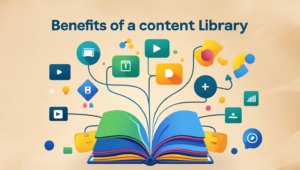Keywords: content creation process, automated content creation, content creation workflow, automated content generation, content creation process flow
In this lesson, I want to go through with you; the Content Creation Process. When you have identified the keyword you want to target, the first thing you want to do is identify the search intent of the keyword, then you should understand who is searching for the keyword and where they stand in the customer journey so that you can have appropriate calls-to-action for them. This is a Content Creation Process.
Table of Contents
ToggleContent Creation Process
Then after that, you should do research on the topic. Now, topic research is not something I can put into a lesson because there are many ways for you to do research. You can do a Google search and read articles, you can base your research on your knowledge, refer to relevant books, courses, etc.
But, what I can share with you, in terms of research, is a trick to identify what Google is looking for in a top-ranking article.
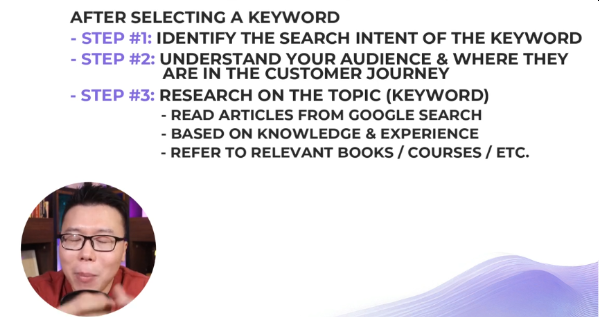
Content Creation Examples
I’ll give you an example. When we Google the keyword “Best WooCommerce Plugins”, the article from Hostinger gets the featured snippet but who gets the snippet will always change so I wouldn’t put our hopes on it. What we can focus on is the differences between the top ranking articles. You see Kinsta is raking at the top and it has only 24 recommendations. Why does it rank higher than WPBeginner which has 32 recommendations?
Understanding Appropriate Content Length is essential when learning How to Create a Comprehensive Content Outline that effectively communicates key information and engages the target audience.

And, what about WPForms which has 38 recommendations? What is Google looking for?
To identify that, we can use an AI tool from Google called Bard. To get this tool, go to Google and search for “Google Bard”. This is the tool we are talking about.
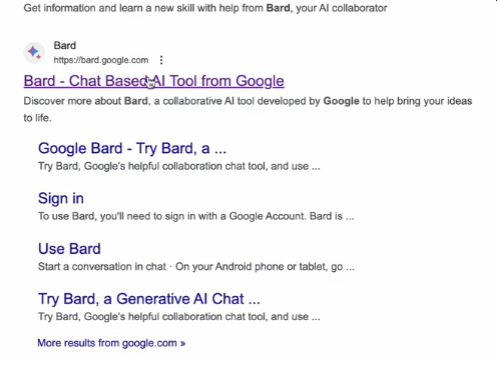
Bard is an AI Chatbot from Google, and what you can do is ask Bard “Can you tell me the main differences between the two page URLs” Paste the two URLs you want to compare and continue the question “That are ranking for the keyword “Best WooCommerce Plugins”.”
It says that “Both pages target the keyword but cater to different user intents”
Remember Kinsta is ranking at the top, so in terms of focus, their list leans toward improved pricing, shipping, checkout and email management. It is a wide range of funcionalities whereas WPForms has a more narrow focus, it recommends plugins that provide marketing and conversion optimisation.
This gives you an idea that Google wants plugins that cover a wide range of functionalities. Which makes sense, the keyword “Best WooCommerce Plugins” has no specifications unless the keyword is “Best WooCommerce Plugins for Marketers” then in terms of the type of recommendations, Kinsta focuses on Free and Premium Plugins with an emphasis on paid options. While WPForms focuses more on plugins for budget-conscious users,
The content type: Kinsta offers technical reviews while WPForms provides short descriptions and highlights key features.
So from this, we can conclude that Google favours a more detailed review of each plugin.
The integration of automated content generation into the content creation process allows organizations to streamline workflows and produce high-quality content more efficiently.
Googe Bard
Google Bard is a cool tool that can help you rank better and gain deeper insight into what Google is looking for on a particular keyword.
You can ask Google Bard about the differences between the top and the third result and identify the missing ingredient that allows the top result to be at the top.
However, what I want to emphasis is that the key to ranking on search engines is uniqueness.

Not just the text you check for plagiarism but a piece of knowledge, data, research or something that no-one has thought of or shared before. That, coupled with the angles and insights you get from Google Bard, your content will have a huge chance of ranking at the top.
Let’s get back to our content creation process. While you are doing your research, you should jot down pointers to add to the outline of your content. Then, firm up your content outline and then start writing.
At this point, you shouldn’t be worried about On-page SEO because you should focus on creating people-first content. You should be writing for people to read. Important information, things that people are expecting to get, should be at the top of your article.
Only after you have completed your article, you should start optimising it for SEO. If you are using Rankmath, we have made it super-easy for you.
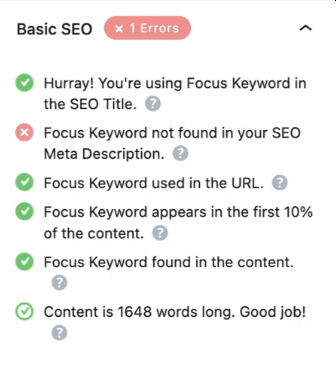
With this checklist and score. As long as your score is above 80, your content is SEO-friendly.
Take note: This SEO score is not an indicator of how well your article will rank. There is no point in forcing a 100 score. Everything needs to be natural.
Once you optimise for this score, you could also try to optimise your meta title and description so that you can improve the click-through rate. You see when you search for something, the first thing you see is the title and description in the search result.
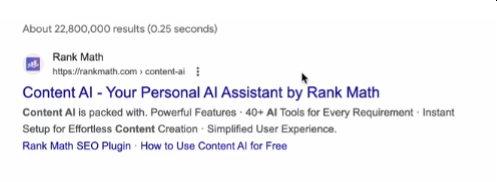
So, if both of these items entice people, they will be more likely to click through to read. So it is important to optimise for it. Then once the meta title and description is optimized, you also want to optimise your article for search.
What I would do is, based on the keywords and the location you are targeting, shape the live data, meaning the search results that are ranking at the top of your keyword. Analyse the content of the top searches and it will suggest some important data for you.
Optimising for these important data, you will have a higher chance of ranking. This is the entire content creation process. Don’t worry, we will go through everything one step at a time.
By integrating automated content generation into our content creation process flow, organizations can reduce manual effort, maintain consistency, and scale their output. This approach ensures that content remains relevant and engaging while minimizing the time and resources traditionally required.




